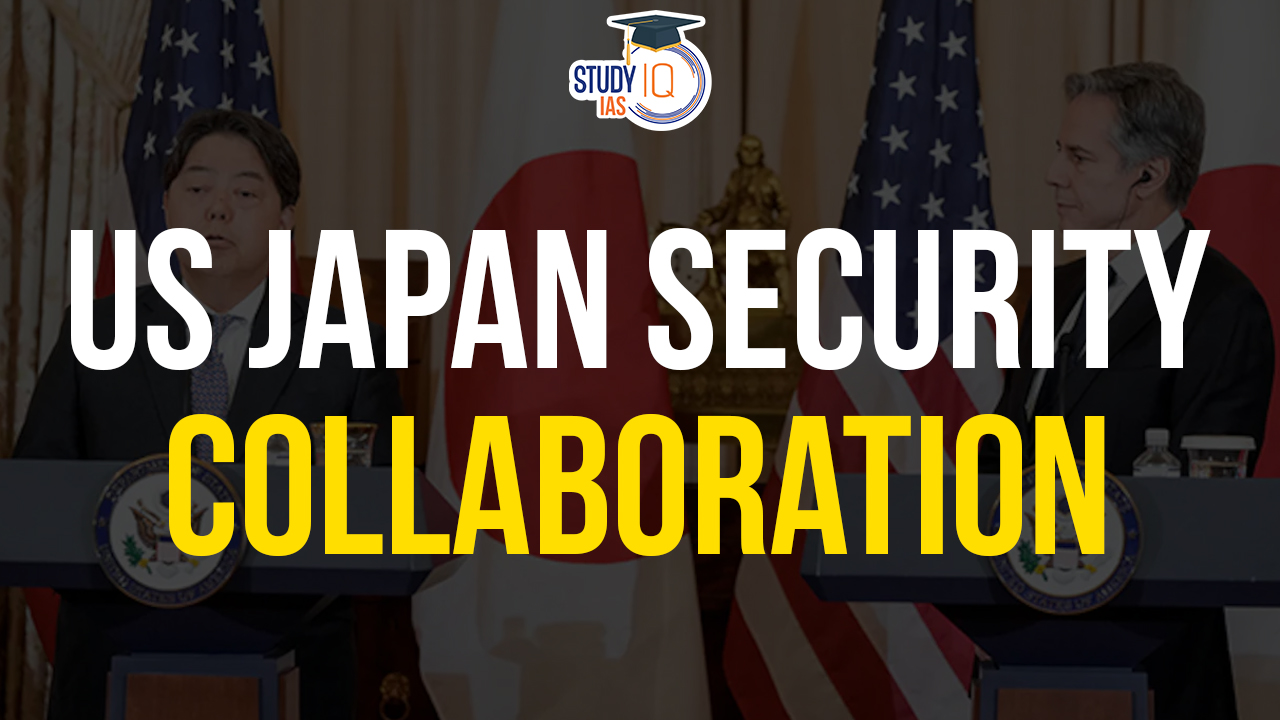Table of Contents
Context
- S. President Joe Biden and Japanese Prime Minister Fumio Kishida have declared the beginning of a “new era” in strategic collaboration between the U.S. and Japan.
- They announced a variety of initiatives, including joint missile development and crewed lunar missions, and criticised China’s aggressive actions in the region.
New Era of Security Cooperation Between US Japan
- Goal: Build a global security partnership to address complex challenges.
- Focus Areas:
- Co-development of missiles
- Upgraded military command-and-control frameworks for better interoperability
- Upgraded defence communications networks
- Networked air defence capabilities with the US, Australia and Japan
- Joint forum on defence industrial cooperation for co-development and co-production (missiles, aircraft maintenance)
- Working group for fighter pilot training (including AI and advanced simulators)
- Shared goal for a Japanese astronaut to be the first non-American on the moon (Artemis mission)
- Potential collaboration with AUKUS on advanced technologies (quantum computing, undersea, hypersonic, AI, cyber)
How the Allies Have Grappled with China?
China’s Rise as a Major Concern
- Since the 1996 Taiwan Strait Crisis, China’s rapid economic and military growth has worried the US-Japan alliance.
- China’s growing defence budget and military modernization have sparked concerns about its global ambitions.
Territorial Disputes
- A long-standing territorial dispute exists between China and Japan over the Senkaku/Diaoyu Islands in the East China Sea.
- The US maintains neutrality on sovereignty but considers the islands under the US-Japan security treaty due to their administration by Japan.
- Diplomatic flare-ups, like China’s air defence identification zone over the islands in 2013, raise fears of a military clash potentially involving the US.
| Senkaku/Diaoyu Islands History |
|
- US Strategic Shift to Counter China: The US has shifted focus to the Indo-Pacific to counter China’s assertiveness. This includes:
- Obama’s “pivot to Asia” strengthened ties with regional partners like Japan.
- Revival of the Quad security dialogue with the US, Australia, India, and Japan.
- Biden administration’s commitment to the Quad, expanding cooperation on various issues.
- Considering adding Japan to the AUKUS security pact to boost Indo-Pacific defences.
- Japan’s Balancing Act: Despite close economic ties with China, Japan is concerned about its military rise.
- Japan has voiced concerns over:
- China’s maritime actions.
- Human rights issues in Hong Kong and Xinjiang.
- Stability in the Taiwan Strait.
- Japan has voiced concerns over:
Way Forward
- Deepen Strategic Alliances and Partnerships: Building on the foundation of the U.S.-Japan alliance, there should be an active effort to deepen strategic partnerships with other Indo-Pacific nations and entities like the Quad (U.S., Australia, India, Japan), and potentially extend cooperation with AUKUS (Australia, UK, US) on advanced technologies.
- This collective effort would serve as a powerful deterrent against regional aggressions and foster a unified front on shared security concerns.
- Advance Defence Capabilities and Interoperability: Accelerate the co-development of critical defence technologies such as missiles, defence communication networks, and air defence systems.
- Enhance military command-and-control frameworks to ensure seamless interoperability among allies, particularly focusing on scenarios that involve collective defence mechanisms.
- Strengthen Economic and Technological Ties: Beyond military cooperation, strengthen economic and technological ties by promoting joint research and development in emerging fields like quantum computing, undersea technologies, and artificial intelligence.
- These efforts will not only bolster defence capabilities but also ensure economic resilience and technological supremacy.
- Sustain Diplomatic Engagement with China: While strengthening defence postures, sustain diplomatic channels with China to manage disputes and tensions, such as the territorial disagreements over the Senkaku/Diaoyu Islands.
- Dialogue and diplomacy should be pursued to prevent escalation and to explore common ground in areas of potential cooperation, ensuring regional stability.
- Expand Space Exploration Collaboration: Leverage the shared goal for a Japanese astronaut to land on the moon as part of the Artemis mission to expand collaboration in space exploration.
- This could serve as a platform for broader scientific cooperation, technological innovation, and peaceable uses of outer space, enhancing the strategic partnership’s scope beyond terrestrial concerns.


 Somaliland Explained: Location, History,...
Somaliland Explained: Location, History,...
 Signals from the Indian Economy: What Ke...
Signals from the Indian Economy: What Ke...
 Reforms Needed in India’s Political Fu...
Reforms Needed in India’s Political Fu...

























